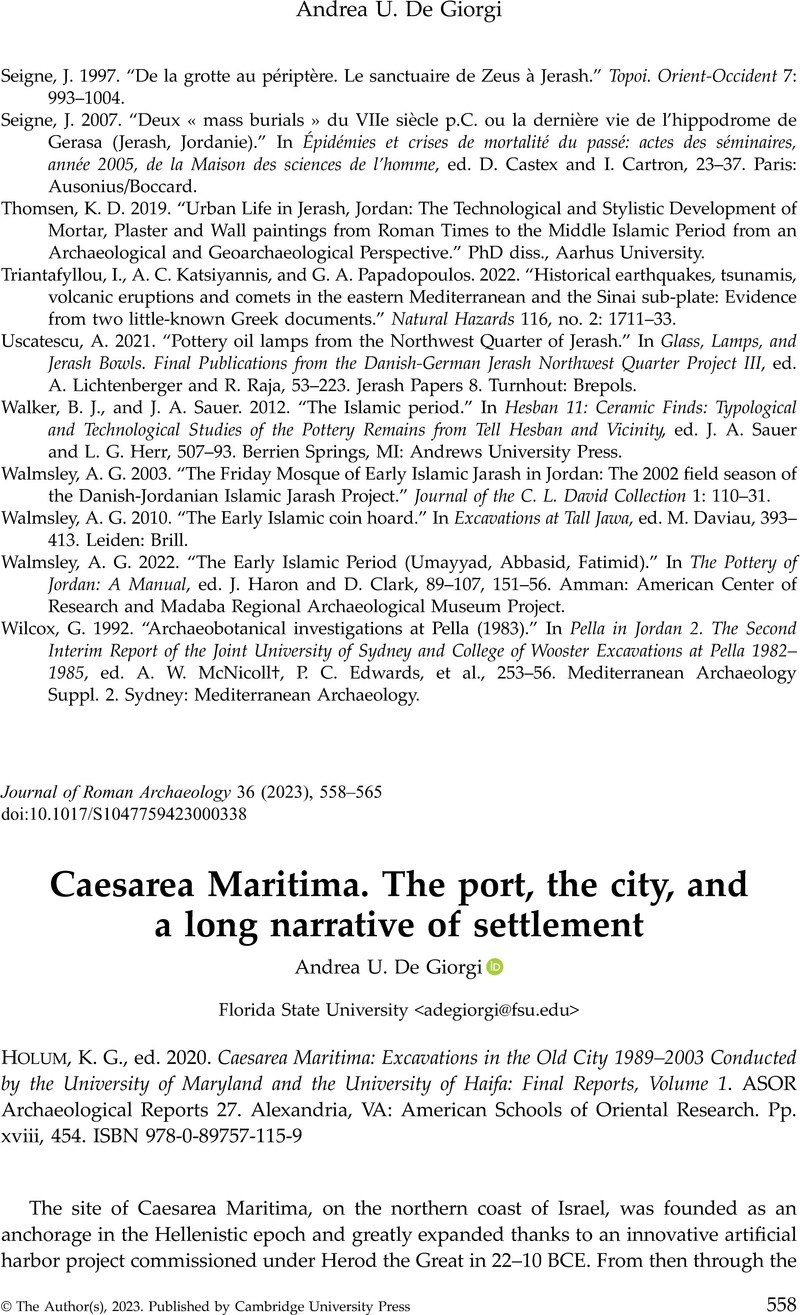Boas, A. 1992. “
Islamic and Crusader pottery (c. 640–1265) from the Crusader city (Area TP/4).” In
Caesarea Papers: Straton's Tower, Herod's Harbour, and Roman and Byzantine Caesarea, ed.
Vann, R. L., 154–66. JRA Supplement 5.
Ann Arbor, MI:
Journal of Roman Archaeology.
Google Scholar 